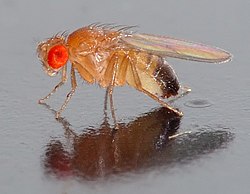Methods of genetic analysis in experiment and human genetics
Genetic analysis deals with the description of hereditary traits from the point of view of genealogical and molecular biology. It can be used, for example, to diagnose various hereditary diseases, tumor diseases associated with genetic predisposition or changes in the number of gene copies and mutations.
In principle, we can distinguish two approaches to genetic analysis. Firstly, it is a genealogical examination, in which, based on the knowledge of Mendel's laws, gene linkage and other genetic principles, we assess heredity of the given trait and the probability of its transmission to future generations. Secondly, we are dealing with cytogenetic and molecular examinations, with which we investigate the cause of the given problem. These include PCR, RT PCR or DNA sequencing. This also includes cytogenetic examinations such as the creation of a karyotype or fluorescence methods molecular cytogenetics (CGH, array, FISH).
Human family samples cannot be used for genetic research and experiments. Their place in research is represented by model organisms - laboratory animals. These are often specially bred laboratory rats, which are "identical" from the point of view of genetics, and when analyzing them, the differences in the genetic information of the individuals at the beginning of the experiment can be neglected. However, the disadvantage is the fact that, despite the great similarity of the human and rat genomes, there are still many areas in which the genetic information differs from each other, and therefore it is not always possible to apply knowledge from model organisms to human genetics.
The basic methods of analysis can be divided between direct' and indirect diagnostics. Direct diagnostics examines the presence of a given disease causally, analyzes known causes and signs of a given problem. Indirect diagnosis examines traits that are not directly related to the disease, but are inherited together in the given case (on the basis of gene linkage).
Methods of genetic analysis in human genetics[edit | edit source]
The basic means is to establish a family tree. The doctor obtains information through a detailed interview with family members. The person who is examined in a given family is called the proband. With the help of various genealogical markers, relationships in the family and the possible occurrence of diseases are recorded. The result of the process is a 'genealogy chart.
The form of inheritance is also determined - whether the disease is transmitted by a dominant'' or a recessive allele and transmitted autosomally or gonosomally- AR, AD, GD, GR. The result can be determining the risk of disease transmission to offspring or other family members.
The disadvantage of this method is the fact that it relies on the human factor and the memory of patients. We can often encounter ambiguities, undiagnosed illnesses or the death of relatives for unspecified reasons. It is therefore a subjective method, if individual family members cannot be examined and the results evaluated. Furthermore, it only determines the probability of transmission in terms of genetic rules, it does not provide evidence of the actual occurrence of the disease in a given individual.
If indicated, it is usually followed by a molecular genetic or cytogenetic examination using one of the above-mentioned methods. These examinations directly prove the given combination of characters, but they are much more complicated, time-consuming and expensive to perform than the creation of a family tree. This is the reason why genetic screening of the entire genome at all its loci is not routinely performed, although its examination with the current capabilities of science would be possible and diagnostically valuable.
Methods of genetic analysis in the experiment[edit | edit source]
``Model organisms are used for disease research, the analysis of which would be unethical to perform on humans. The conclusions from the investigation of these organisms are then used for other species, although with certain limitations. This method of analysis is made possible by the common development paths that the given organisms have gone through during the process of evolution. There is therefore a certain genetic, and thus also morphological-physiological similarity between them.
A model organism should have a short life cycle and non-specific growth requirements. At the same time, there must be techniques capable of manipulating his genome.
One of the first models used in molecular biology was the bacterium E. coli. Others include viruses (bacteriophages), eukaryotes are fungi (Saccharomyces), plants (lotus, tobacco, rice) or smaller animals (fruit flies were often used before - Drosophila melanogaster or various worms). Among vertebrates, model organisms are guinea pigs, mice, rats and others.
The advantage of model organisms is the ability to produce a large number of offspring (in rats, 5–15 offspring in a litter, 3–5 times a year) and a short life span. Laboratory rats (Rattus norvegicus) are bred even in special facilities, where a generation of offspring with the same genome (inbred strain) is achieved by successive crossing of related individuals. Experiments on them are therefore comparable, as already mentioned above. If we wanted to look for a similar equivalent in humans, it would be identical twins. Although similar "human tests" were carried out during the Second World War, today they are ethically completely unacceptable.
Links[edit | edit source]
Related Articles[edit | edit source]
Source[edit | edit source]
References[edit | edit source]
- ALBERTS, B – BRAY, D – JOHNSON, A. Základy buněčné biologie.. 2. edition. Espero Publishing, 2005. 740 pp. ISBN 80-902906-2-0.

